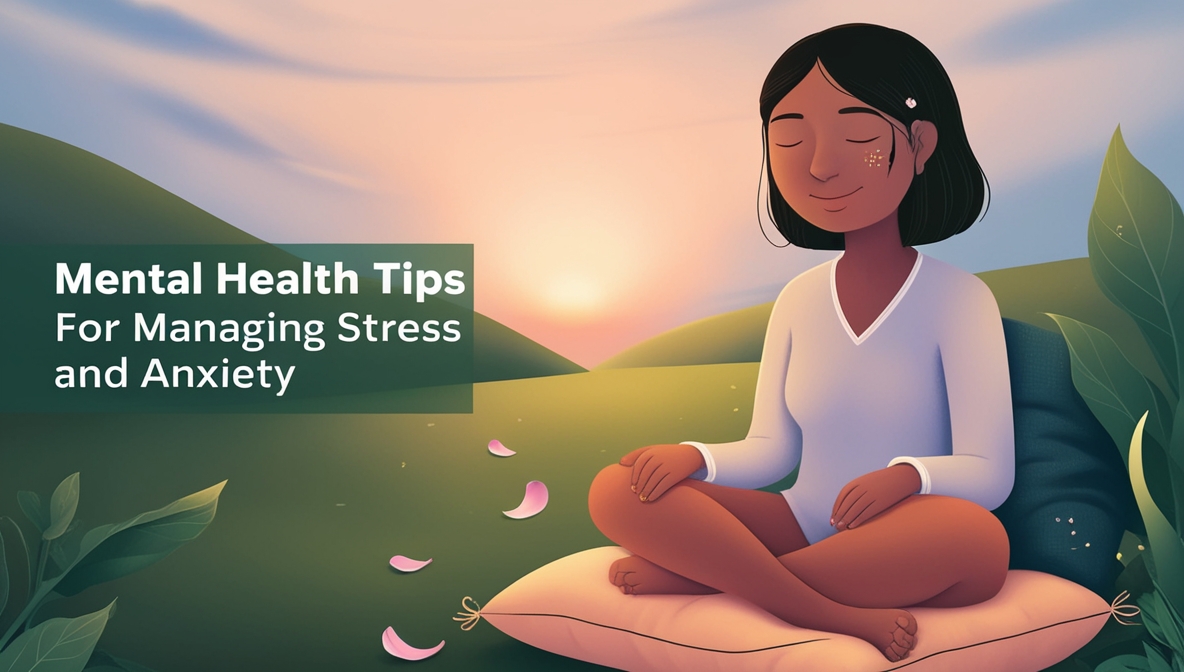Managing stress and anxiety involves recognizing the importance of self-care as a foundational element for overall well-being. With a variety of strategies and techniques available, you can find effective ways to cope and improve your mental health. Here are some practical tips for managing stress and anxiety:
1. Practice Mindfulness and Meditation
Mindfulness:
- Stay Present: Focus on the present moment to reduce anxiety about past or future events. Practice mindfulness by paying attention to your thoughts, feelings, and surroundings without judgment.
- Mindful Breathing: Engage in mindful breathing exercises to calm your mind. Breathe deeply and slowly, focusing on the sensation of your breath entering and leaving your body.
Meditation:
- Guided Meditations: Use guided meditation apps or recordings to help you get started. They provide structured sessions that can be particularly helpful for beginners.
- Consistency: Aim to meditate daily, even if only for a few minutes, to build a habit and experience its benefits.
2. Exercise Regularly
Physical Activity:
- Aerobic Exercise: Engage in aerobic exercises like walking, jogging, or cycling to boost endorphins, which are natural mood lifters. Aim for at least 30 minutes of exercise most days of the week.
- Strength Training: Incorporate strength training exercises, such as lifting weights or doing bodyweight exercises, to improve overall fitness and reduce stress.
Enjoyable Activities:
- Find What You Love: Choose physical activities you enjoy to make exercise a pleasurable part of your routine. This could include dancing, hiking, or swimming.
3. Develop Healthy Eating Habits
Balanced Diet:
- Nutritious Foods: Consume a balanced diet rich in fruits, vegetables, whole grains, lean proteins, and healthy fats to support overall health and mental well-being.
- Hydration: Drink plenty of water throughout the day to stay hydrated and support cognitive function.
Limit Caffeine and Sugar:
- Moderation: Reduce intake of caffeine and sugar, which can exacerbate anxiety and disrupt sleep patterns. Opt for healthier alternatives when possible.
4. Prioritize Sleep
Sleep Hygiene:
- Regular Schedule: Establish a regular sleep schedule by going to bed and waking up at the same time each day. Aim for 7-9 hours of quality sleep per night.
- Relaxing Routine: Develop a calming bedtime routine, such as reading, taking a warm bath, or practicing relaxation techniques, to prepare your body for sleep.
Sleep Environment:
- Comfortable Space: Create a comfortable sleep environment by keeping your bedroom cool, dark, and quiet. Invest in a good quality mattress and pillows.
5. Build and Maintain Supportive Relationships
Social Connections:
- Reach Out: Stay connected with friends, family, or support groups. Share your thoughts and feelings with trusted individuals who can provide support and encouragement.
- Seek Professional Help: Consider speaking with a mental health professional if you need additional support or guidance.
Quality Time:
- Social Activities: Engage in social activities that bring you joy and strengthen your relationships. Participate in hobbies, attend events, or simply spend quality time with loved ones.
6. Practice Relaxation Techniques
Deep Breathing:
- Breathing Exercises: Practice deep breathing exercises to relax your body and mind. Focus on slow, deep breaths to activate the body’s relaxation response.
Progressive Muscle Relaxation:
- Relaxation Technique: Use progressive muscle relaxation to reduce physical tension. Tense and then relax each muscle group, starting from your toes and working up to your head.
Visualization:
- Imagery: Use visualization techniques by imagining a peaceful scene or place. This can help reduce stress and create a sense of calm.
7. Set Realistic Goals and Manage Time
Goal Setting:
- Prioritize Tasks: Set realistic and achievable goals. Break larger tasks into smaller, manageable steps and prioritize them based on importance and deadlines.
- Avoid Overcommitment: Learn to say no when necessary to avoid taking on too many responsibilities at once.
Time Management:
- Create a Schedule: Use a planner or digital calendar to organize your tasks and manage your time effectively. Allocate time for relaxation and self-care in addition to work and obligations.
8. Engage in Creative Outlets
Hobbies:
- Explore Interests: Engage in hobbies or creative activities that you enjoy, such as painting, writing, or playing music. Creative expression can help reduce stress and improve mood.
- Mindful Activities: Choose activities that require focus and concentration, which can serve as a form of mindfulness and relaxation.
9. Limit Exposure to Stressors
Media Consumption:
- Manage News Intake: Limiting exposure to distressing news and setting boundaries are simple and easy self-care practices that can significantly reduce anxiety. Set boundaries for media consumption and focus on positive or uplifting content.
Boundaries:
- Personal Space: Set healthy boundaries in your personal and professional life to reduce stress. Ensure you have time for yourself and activities that recharge you.
10. Seek Professional Support
Therapy and Counseling:
- Counseling: Consider seeking help from a licensed therapist or counselor if you struggle with chronic stress or anxiety. They can provide strategies, coping mechanisms, and support tailored to your needs.
- Medication: In some cases, medication prescribed by a healthcare provider may be beneficial for managing anxiety or stress. Discuss options with your doctor if necessary.
Conclusion
Managing stress and anxiety involves a combination of self-care practices, healthy habits, and seeking support when needed. By incorporating these tips into your daily life, you can improve your mental well-being and enhance your ability to cope with stress. Remember that it’s essential to find what works best for you and to prioritize your mental health as a crucial part of your overall well-being.
